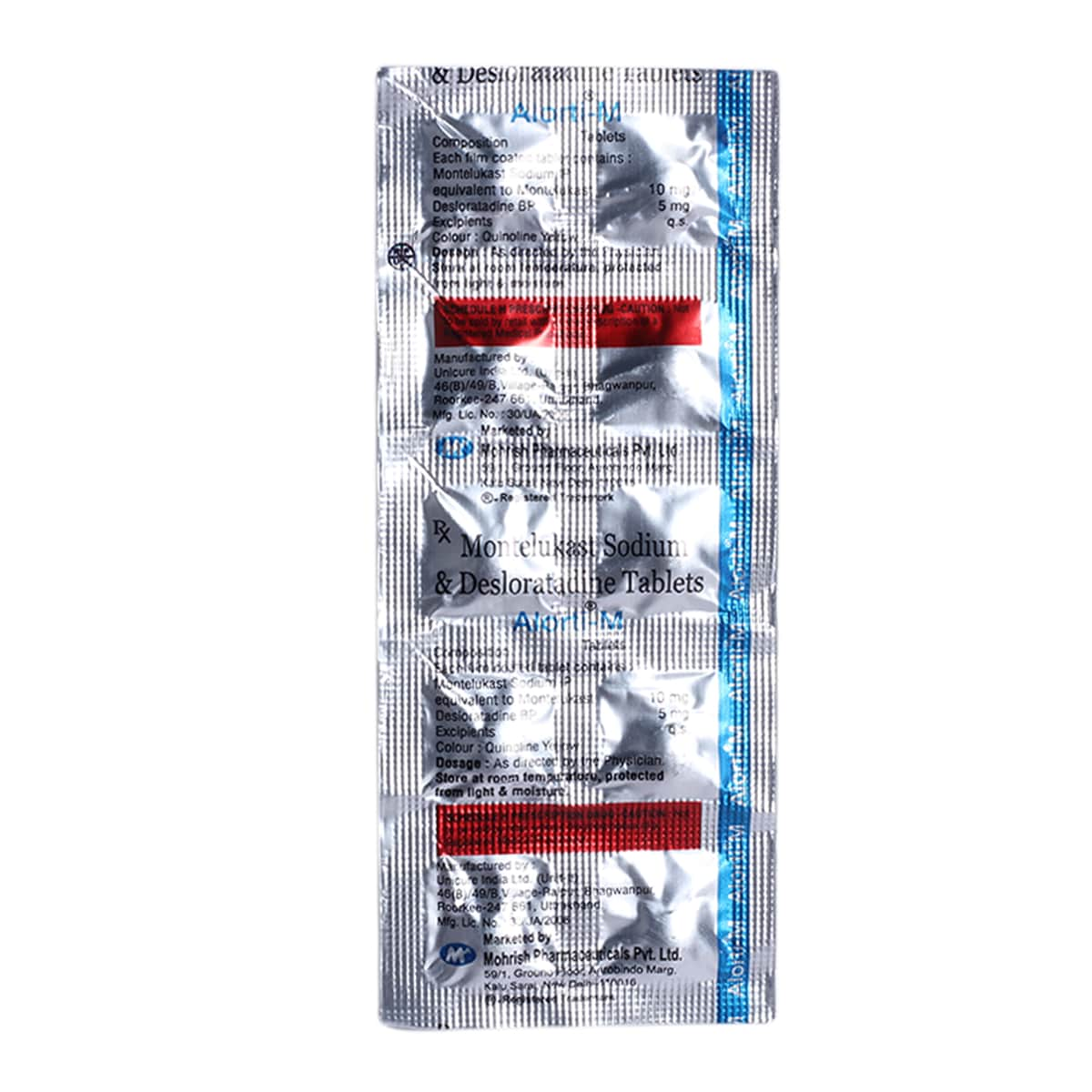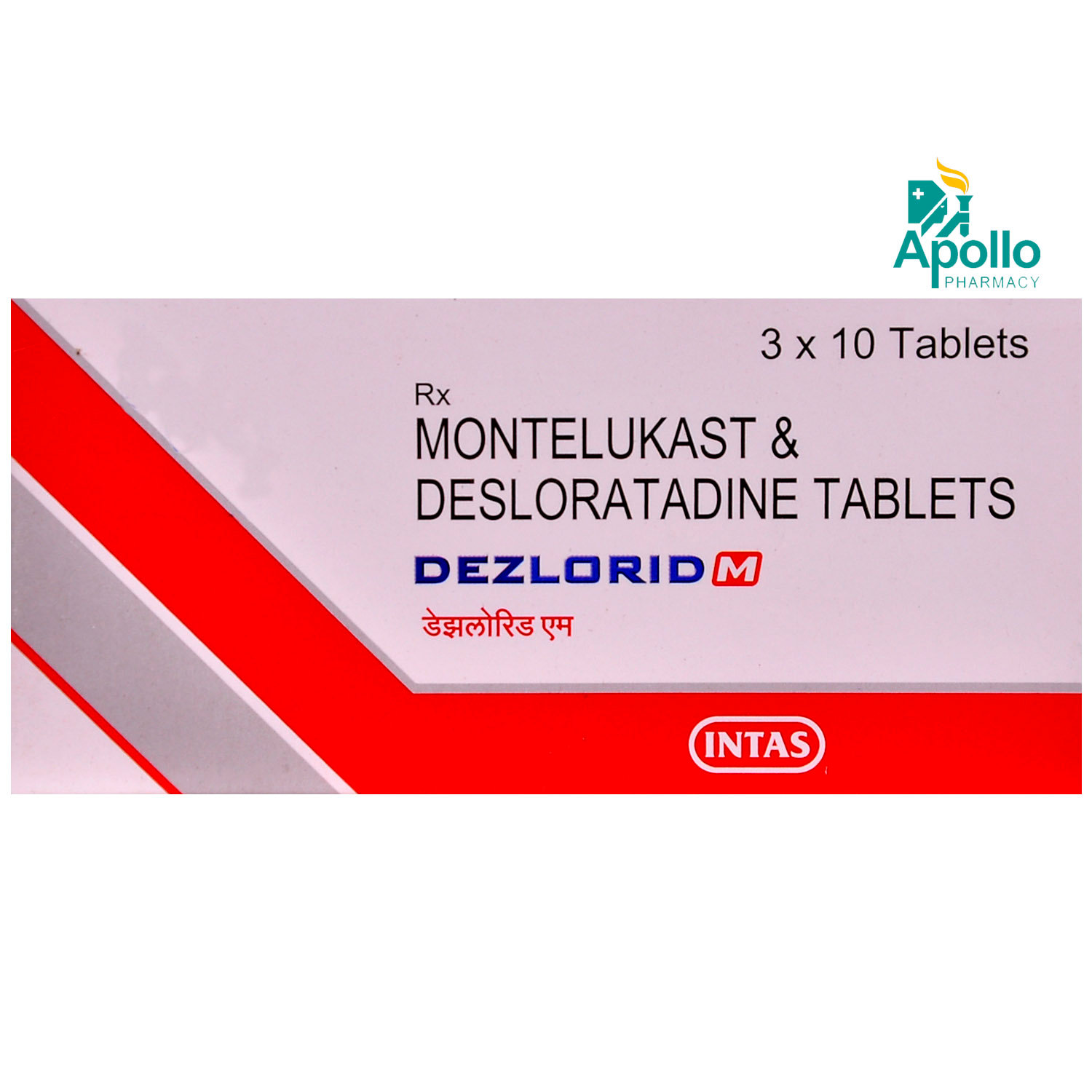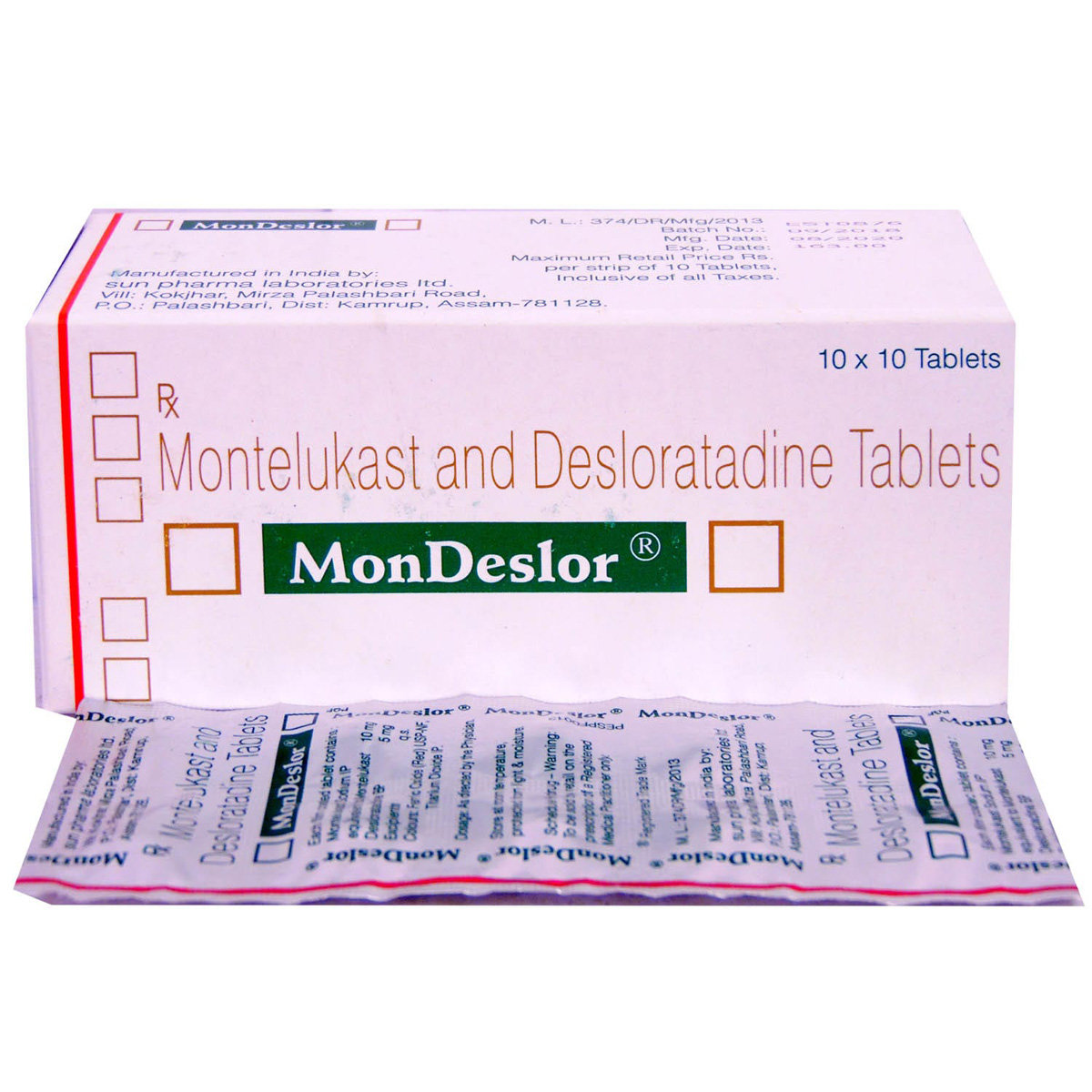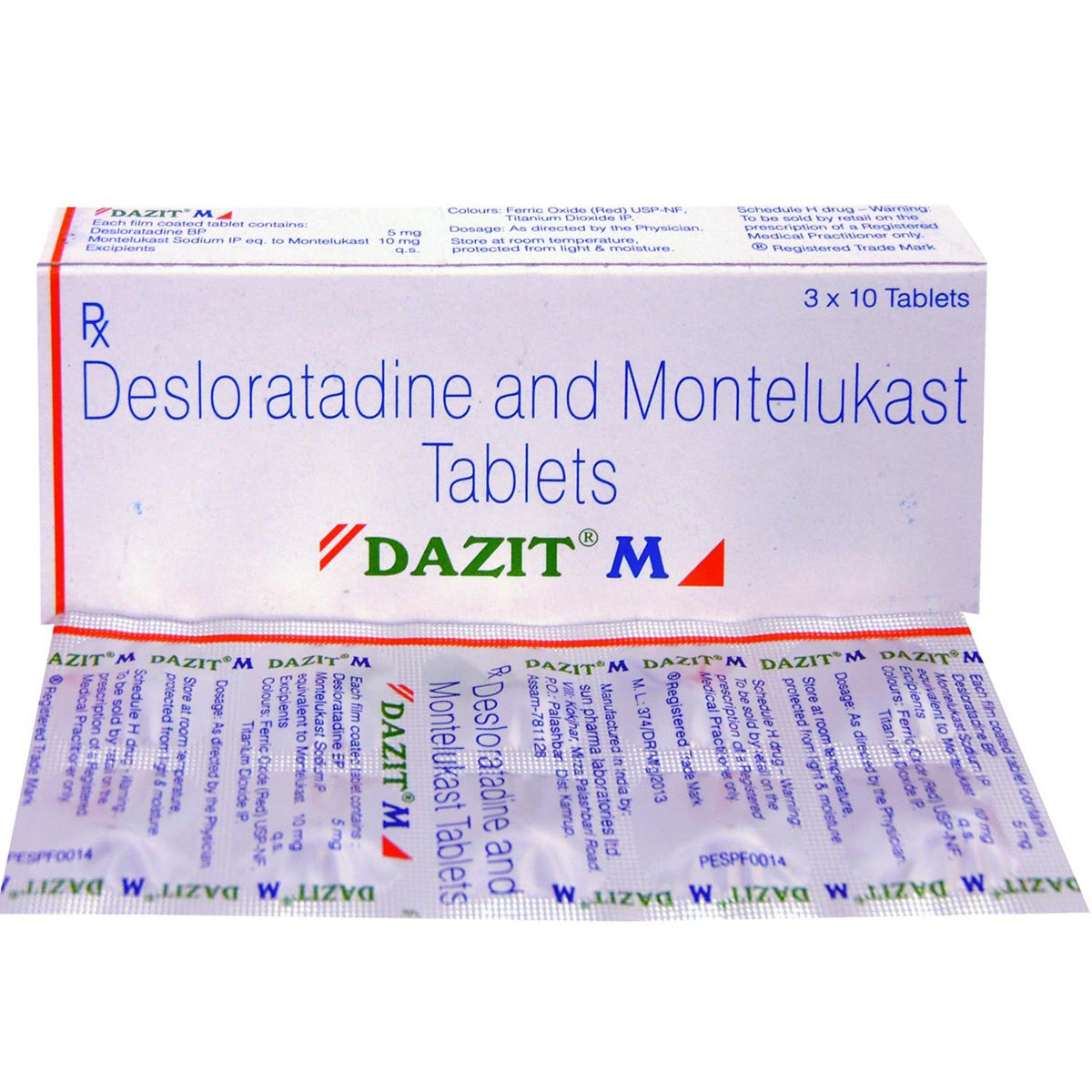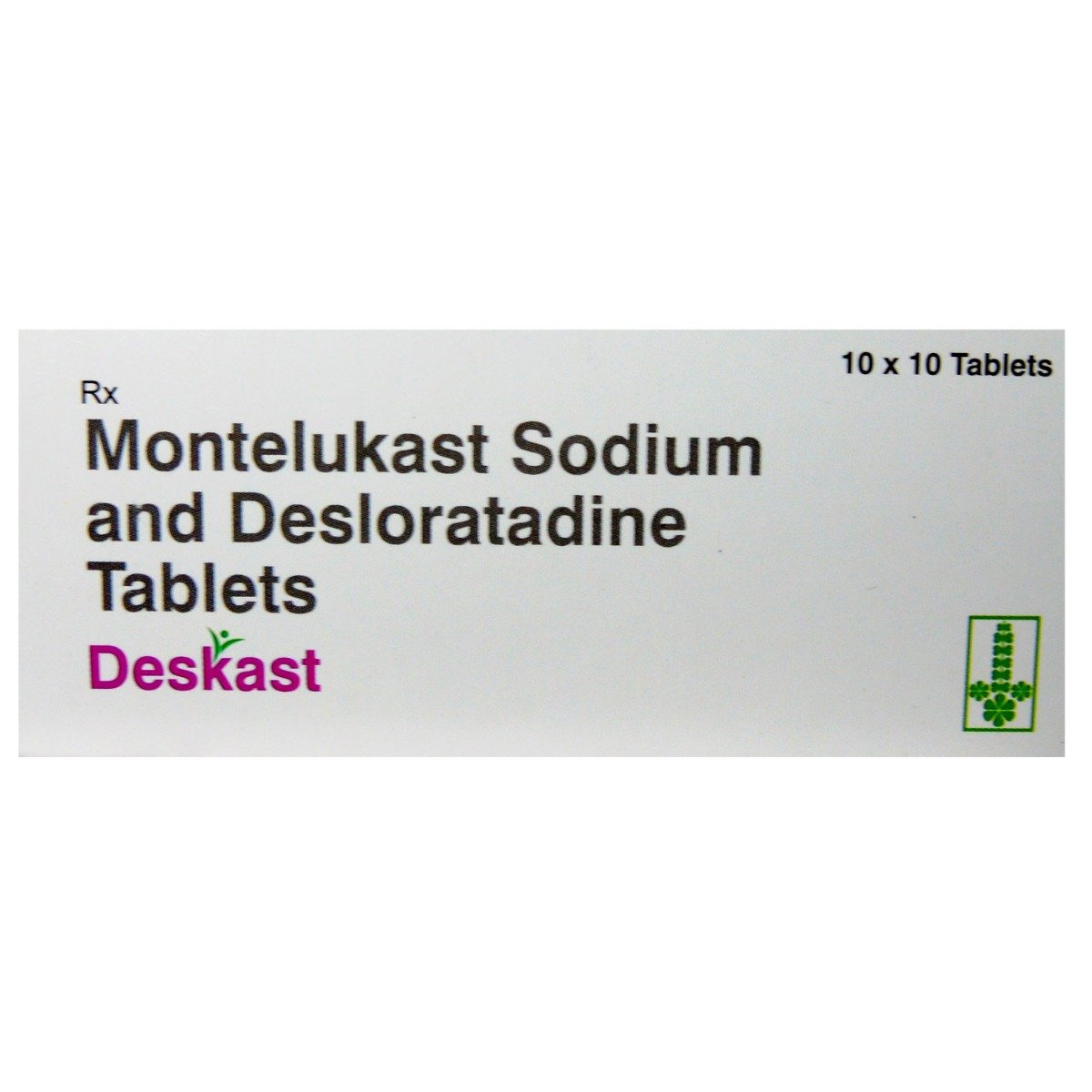Alenix-M Tablet
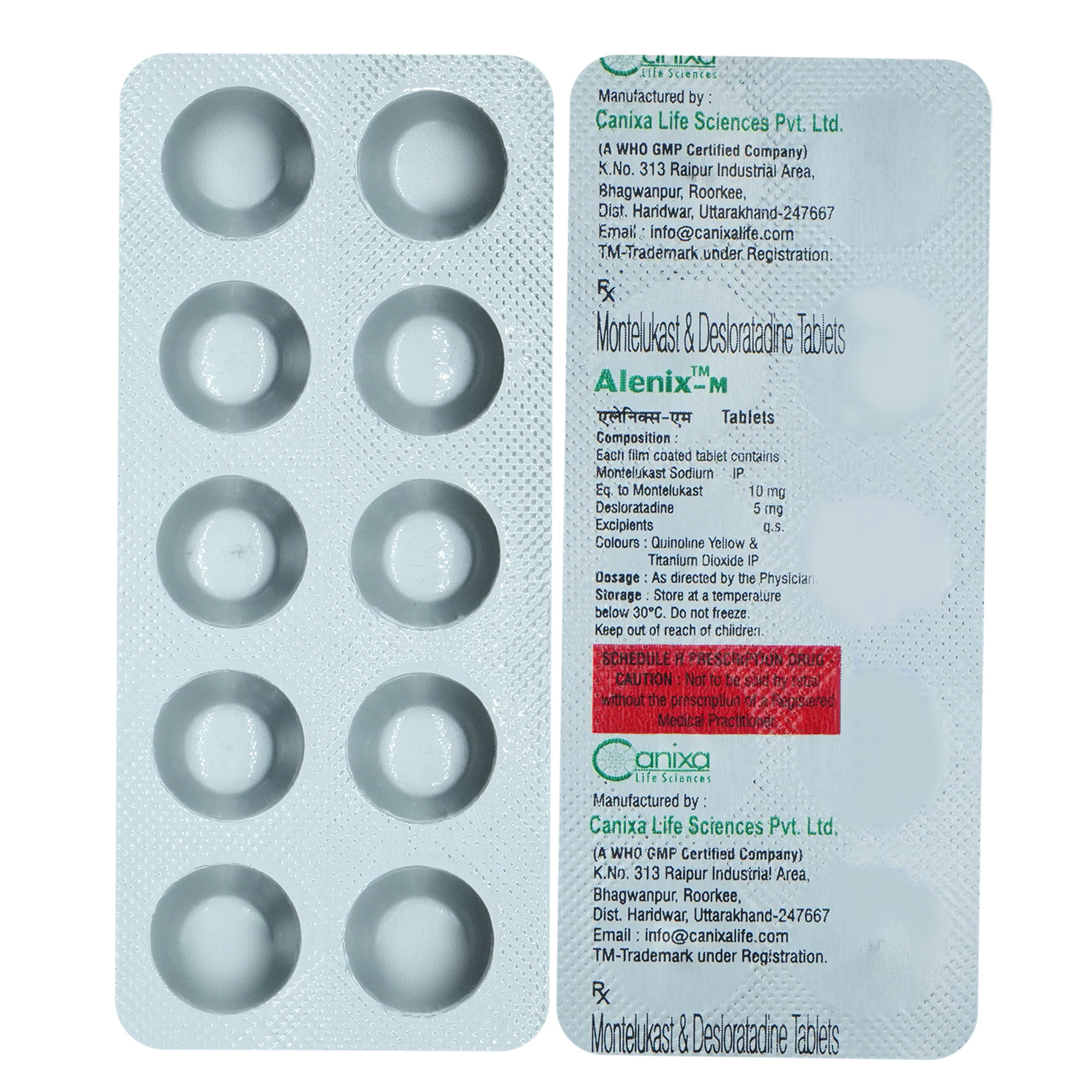
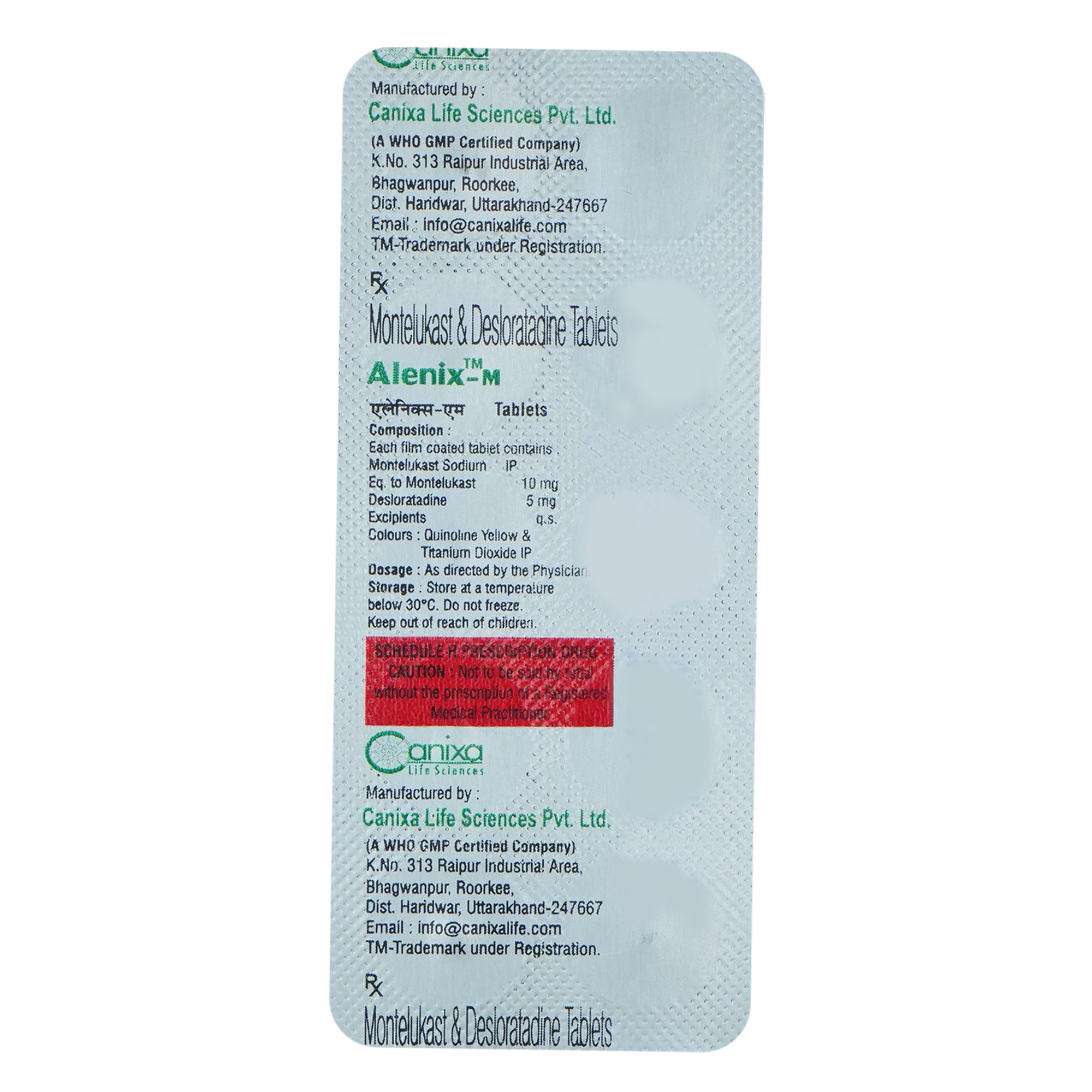
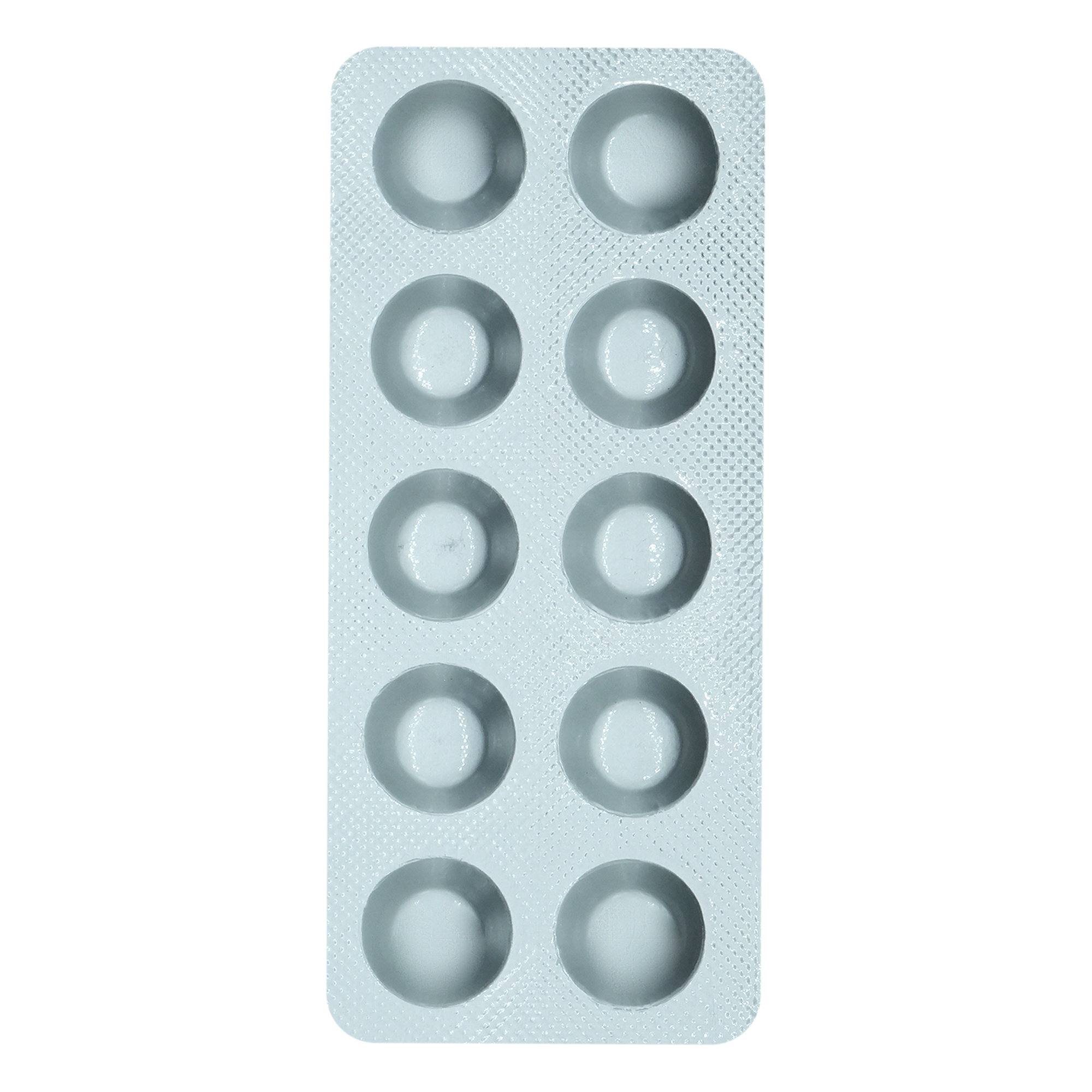
MRP ₹138.5
(Inclusive of all Taxes)
₹20.8 Cashback (15%)
know your delivery time
Provide Delivery Location
Composition :
Manufacturer/Marketer :
Consume Type :
Expires on or after :
Return Policy :

Secure Payment

Trusted by 8 Crore Indians

Genuine Products
Therapeutic Class
Country of origin
Manufacturer/Marketer address
FAQs
Alenix-M Tablet is a combination of two medicines: Desloratadine and Montelukast. Desloratadine is an antihistamine and acts by blocking the action of histamines (chemical substances) that cause allergic symptoms. Montelukast is a leukotriene antagonist, which blocks a chemical messenger (leukotriene) and reduces inflammation and swelling in the nose. Together, Alenix-M Tablet It provides quick relief from allergic symptoms such as sneezing, runny nose, coughing, watery eyes, etc.
Alenix-M Tablet can be safely taken daily until your allergic symptoms subside and as long as your doctor has advised you to take it.
The common side-effects of Alenix-M Tablet are abdominal pain, headache, fatigue, and dry mouth. These side-effects are usually mild and go away without any treatment.
Alenix-M Tablet can be safely used in patients with diabetes. However, always consult your doctor before taking Alenix-M Tablet to discuss the possible risks associated with this medicine.
Alenix-M Tablet can improve symptoms in patients with seasonal allergic asthma. However, always consult your doctor before taking Alenix-M Tablet to discuss the possible risks associated with this medicine.
Disclaimer
Alcohol
Safe if prescribed
Alcohol consumption may worsen your health condition and also interfere with the activity of Alenix-M Tablet . So, do not consume alcohol while taking Alenix-M Tablet .
Pregnancy
Consult your doctor
Alenix-M Tablet is a category C medicine. It may cause toxic effects to the fetus. So, it should be used in pregnant women only if needed by doing a benefit/risk assessment.
Breast Feeding
Consult your doctor
Alenix-M Tablet can be safely used in breastfeeding mothers when prescribed.
Driving
Safe if prescribed
Alenix-M Tablet may cause drowsiness. So, do not drive or operate heavy machinery if you feel sleepy.
Liver
Consult your doctor
Alenix-M Tablet should be used with caution in patients with liver diseases. The dose may have to be adjusted by your doctor.
Kidney
Consult your doctor
Alenix-M Tablet should be used with caution in patients with kidney diseases. The dose may have to be adjusted by your doctor.
Children
Safe if prescribed
Alenix-M Tablet is not recommended for use in children under 12 years of age.
Product Substitutes
About Alenix-M Tablet
Alenix-M Tablet belongs to the class of medications ‘antiallergic’ used in the treatment of allergic rhinitis. Allergic rhinitis (hay fever) is an allergic response to certain foods or pollen, pet dander, or other allergens. Allergic condition varies from person to person. It is typically characterized by allergic symptoms such as a runny nose, sneezing, red, watery, itchy, and swollen eyes.
Alenix-M Tablet is a combination of two medicines: Desloratadine and Montelukast. Desloratadine is an antihistamine and acts by blocking histamine's action (chemicals causing allergic symptoms) and reducing the allergic reaction. It provides quick relief from allergic symptoms. Montelukast is a leukotriene antagonist, which blocks a chemical messenger (leukotriene) and reduces inflammation and swelling in the nose.
You should take this medicine as prescribed by your doctor. The common side-effects of Alenix-M Tablet are abdominal pain, headache, fatigue, and dry mouth. These side-effects usually go away without any medical treatment. However, if any of these side-effects persist or worsen, consult a doctor immediately.
Do not take Alenix-M Tablet if you are allergic to Desloratadine, Montelukast, or any other ingredients present in it. Before taking Alenix-M Tablet , inform your doctor about all the allergies you have, if any. Alenix-M Tablet is not recommended in patients who have medical or family history of seizures, kidney failure, and phenylketonuria (an inherited disease that causes a build-up of amino acid phenylalanine in the body). Alenix-M Tablet is not recommended for use in children under 12 years of age. Inform your doctor if you are pregnant or breastfeeding.
Uses of Alenix-M Tablet
Medicinal Benefits Mweb
Key Benefits
Alenix-M Tablet is a combination of two medicines: Desloratadine and Montelukast. Desloratadine is an antihistamine and acts by blocking histamine's action (chemicals causing allergic symptoms) and reducing the allergic reaction. It provides quick relief from allergic symptoms. Montelukast is a leukotriene antagonist, which blocks a chemical messenger (leukotriene) and reduces inflammation and swelling in the nose. Together, Alenix-M Tablet improves allergic symptoms such as sneezing, runny nose, coughing, watery eyes, etc.
Directions for Use
Side Effects of Alenix-M Tablet
- Abdominal pain
- Headache
- Fatigue
- Dry mouth
- Diarrhea
- Dizziness
- Drowsiness
- Nausea
- Vomition
- Fatigue
- Irritability
Drug Warnings
If you notice any behavioral changes while taking Alenix-M Tablet , inform your doctor immediately. If you are supposed to undergo skin testing, the doctor might advise you to stop taking Alenix-M Tablet 72 hours before the test as it decreases response to skin prick test. Do not stop taking Alenix-M Tablet abruptly even if you feel better, as it may cause withdrawal symptoms such as itching, burning sensations, or runny nose.
Drug-Drug Interactions
Drug-Drug Interactions
Login/Sign Up
Co-administration of Alenix-M Tablet with Isocarboxazid can increase the risk of CNS depression.
How to manage the interaction:
Taking Alenix-M Tablet with Isocarboxazid together can possibly result in an interaction, but it can be taken if a doctor has advised it. Do not stop using any medications without talking to a doctor.
Co-administration of Ivacaftor and Alenix-M Tablet can increase the levels of Alenix-M Tablet.
How to manage the interaction:
Co-administration of Alenix-M Tablet with Ivacaftor can possibly result in an interaction, but it can be taken if doctor has advised it. Do not stop using any medications without talking to a doctor.
Co-administration of Alenix-M Tablet with Tranylcypromine may increase the risk or severity of CNS depression (decreased heart rate, decreased rate of breathing, loss of consciousness).
How to manage the interaction:
Although there is an interaction between Alenix-M Tablet with tranylcypromine, but it can be taken if a doctor has advised it. However, if you experience any unusual symptoms contact your doctor immediately. Do not discontinue any medications without consulting a doctor.
Coadministration of Rifapentine with Alenix-M Tablet may reduce the blood levels and effects of Alenix-M Tablet. This can lead to low treatment outcomes.
How to manage the interaction:
Taking Rifapentine with Alenix-M Tablet together can possibly result in an interaction, it can be taken if your doctor has advised it. If you experience increased side effects such as headache, fever, sore throat, cough, abdominal pain, diarrhea, earaches, runny nose, or behavior and mood changes consult a doctor. Do not discontinue any medications without consulting a doctor.
Coadministration of Miconazole with Alenix-M Tablet may increase the blood levels and effects of Alenix-M Tablet. This increases the risk or severity of side effects.
How to manage the interaction:
Although there is a possible interaction between miconazole and Alenix-M Tablet, you can take these medicines together if prescribed by your doctor. However, if you experience any symptoms such as fever, sore throat, cough, stomach pain, diarrhea, earache, runny nose, or uncommon, depression, confusion, difficulty concentrating, anxiety, hallucinations, irritability. memory impairment, restlessness, sleep walking, Consult a doctor immediately. Do not stop using medications without a doctor's advice.
Coadministration of Alenix-M Tablet and Phenytoin may reduce the blood levels and effects of Alenix-M Tablet. This can lead to low treatment outcomes.
How to manage the interaction:
Taking Alenix-M Tablet and Phenytoin may interact with one another, but they can be taken together if your doctor has prescribed them. However, if you experience signs such as headache, fever, sore throat, cough, abdominal pain, diarrhoea, earache, runny nose, or behaviour and mood changes, consult a doctor immediately. Do not discontinue any medications without consulting a doctor.
Coadministration of Alenix-M Tablet and primidone can reduce the levels and effects of Alenix-M Tablet.
How to manage the interaction:
Taking Alenix-M Tablet and Primidone together can possibly result in an interaction, it can be taken if prescribed by a doctor. However, if you experience any unusual symptoms, contact a doctor immediately. Do not discontinue any medications without consulting a doctor.
Coadministration of Alenix-M Tablet and rifabutin can reduce the levels and effects of Rifabutin. This can lead to low treatment outcomes.
How to manage the interaction:
Taking Alenix-M Tablet and rifabutin together can possibly result in an interaction, it can be taken if your doctor has advised it. However, if you experience increased side effects such as headache, fever, sore throat, cough, abdominal pain, diarrhea, earache, runny nose, or behavior and mood changes consult a doctor. Do not discontinue any medications without consulting a doctor.
Drug-Food Interactions
Drug-Food Interactions
Login/Sign Up
Drug-Diseases Interactions
Drug-Diseases Interactions
Login/Sign Up
Drug-Drug Interactions Checker List
- PHENOBARBITAL
- PHENYTOIN
- FLUOXETINE
- CIMETIDINE
- KETOCONAZOLE
- AZITHROMYCIN
- ERYTHROMYCIN
- RIFAMPICIN
- GEMFIBROZIL
- ASPIRIN
Habit Forming
Special Advise
- Stop taking Alenix-M Tablet and inform your doctor or the person before undergoing any tests.
Diet & Lifestyle Advise
- Stay hydrated as it is vital for those with a cough or cold. Drinking liquids at room temperature can alleviate runny nose and sneezing.
- Avoid stress as the immune system is affected by stress and raises the risk of being sick. An individual can exercise regularly, meditate, do deep breathing, and try progressive muscle relaxation techniques to relieve stress.
- Avoid contact with known allergens (allergy-causing agents) such as pollen, dust, etc., and also certain food items are known to cause allergies to you.
- Maintain personal hygiene and keep your surroundings clean.
All Substitutes & Brand Comparisons
RX
Descure M Tablet 10's
Cure N Cure Pharmaceuticals Ltd
₹99
(₹8.91 per unit)
28% CHEAPERRX
Desmont Tablet 10's
Xemex Life Sciences
₹101.5
(₹9.14 per unit)
26% CHEAPERRX
Avertich-M Tablet 10's
Amwill Healthcare Pvt Ltd
₹107.5
(₹9.68 per unit)
22% CHEAPER

Have a query?
Buy best Anti Allergic Drugs products by
Cipla Ltd
Micro Labs Ltd
Sun Pharmaceutical Industries Ltd
Alkem Laboratories Ltd
Mankind Pharma Pvt Ltd
Dr Reddy's Laboratories Ltd
Lupin Ltd
Leeford Healthcare Ltd
Abbott India Ltd
Intas Pharmaceuticals Ltd
Glenmark Pharmaceuticals Ltd
Morepen Laboratories Ltd
Alembic Pharmaceuticals Ltd
Aristo Pharmaceuticals Pvt Ltd
East West Pharma India Pvt Ltd
Hetero Drugs Ltd
Torrent Pharmaceuticals Ltd
Systopic Laboratories Pvt Ltd
Zydus Cadila
Ajanta Pharma Ltd
Canixa Life Sciences Pvt Ltd
FDC Ltd
Macleods Pharmaceuticals Ltd
Zuventus Healthcare Ltd
Hegde & Hegde Pharmaceutica Llp
Kivi Labs Ltd
Koye Pharmaceuticals Pvt Ltd
Medishri Healthcare Pvt Ltd
Rapross Pharmaceuticals Pvt Ltd
Sanofi India Ltd
Unison Pharmaceuticals Pvt Ltd
Wockhardt Ltd
Biochem Pharmaceutical Industries Ltd
Elder Pharmaceuticals Ltd
Indoco Remedies Ltd
Fourrts India Laboratories Pvt Ltd
Zydus Healthcare Ltd
Amwill Healthcare Pvt Ltd
Bayer Pharmaceuticals Pvt Ltd
Corona Remedies Pvt Ltd
Indiabulls Pharmaceuticals Pvt Ltd
Ipca Laboratories Ltd
Klm Laboratories Pvt Ltd
Olcare Laboratories Pvt Ltd
Talent India Pvt Ltd
Zee Laboratories Ltd
Auspharma Pvt Ltd
Biocute Life Care
Cadila Healthcare Ltd
Dolvis Bio Pharma Pvt Ltd
Entod Pharmaceuticals Ltd
Indchemie Health Specialities Pvt Ltd
Levin Life Sciences Pvt Ltd
Med Manor Organics Pvt Ltd
Pristine Pearl Pharma Pvt Ltd
Rockmed Pharma Pvt Ltd
Troikaa Pharmaceuticals Ltd
Uniza Healthcare Llp
Cadila Pharmaceuticals Ltd
Capital Pharma
Cnx Health Care Pvt Ltd
Eumedica Pharamceuticals
Galcare Pharmaceuticals Pvt Ltd
GlaxoSmithKline Pharmaceuticals Ltd
Knoll Healthcare Pvt Ltd
Medgen Drugs And Laboratories Pvt Ltd
Oaknet Healthcare Pvt Ltd
Seagull Pharmaceutical Pvt Ltd
Skn Organics Pvt Ltd
Unipark Biotech Pvt Ltd
Akumentis Healthcare Ltd
Apex Laboratories Pvt Ltd
Atopic laboratories Pvt Ltd
Aurz Pharmaceutical Pvt Ltd
Biophar Lifesciences Pvt Ltd
Delcure Life Sciences Ltd
Eris Life Sciences Ltd
Gladstone Pharma India Pvt Ltd
Heal (India) Laboratories Pvt Ltd
Inex Medicaments Pvt Ltd
Keimed Pvt Ltd
Kepler Healthcare Pvt Ltd
Lividus Pharmaceuticals Pvt Ltd
Monichem Healthcare Pvt Ltd
Nova Indus Pharmaceuticals
Psychotropics India Ltd
RPG Life Sciences Ltd
Rnd Laboratories Pvt Ltd
SMG Global Pharma
TTK Healthcare Ltd
Vasu Organics Pvt Ltd
Votary Laboratories (India) Ltd
Yaher Pharma
Yuventis Pharmaceuticals
Acclimate Life Sciences
Bioceutics Inc
Biochemix Health Care Pvt Ltd
Brinton Pharmaceuticals Ltd
Chlorophyll Pharmaceuticals
DR Johns Lab Pharma Pvt Ltd




